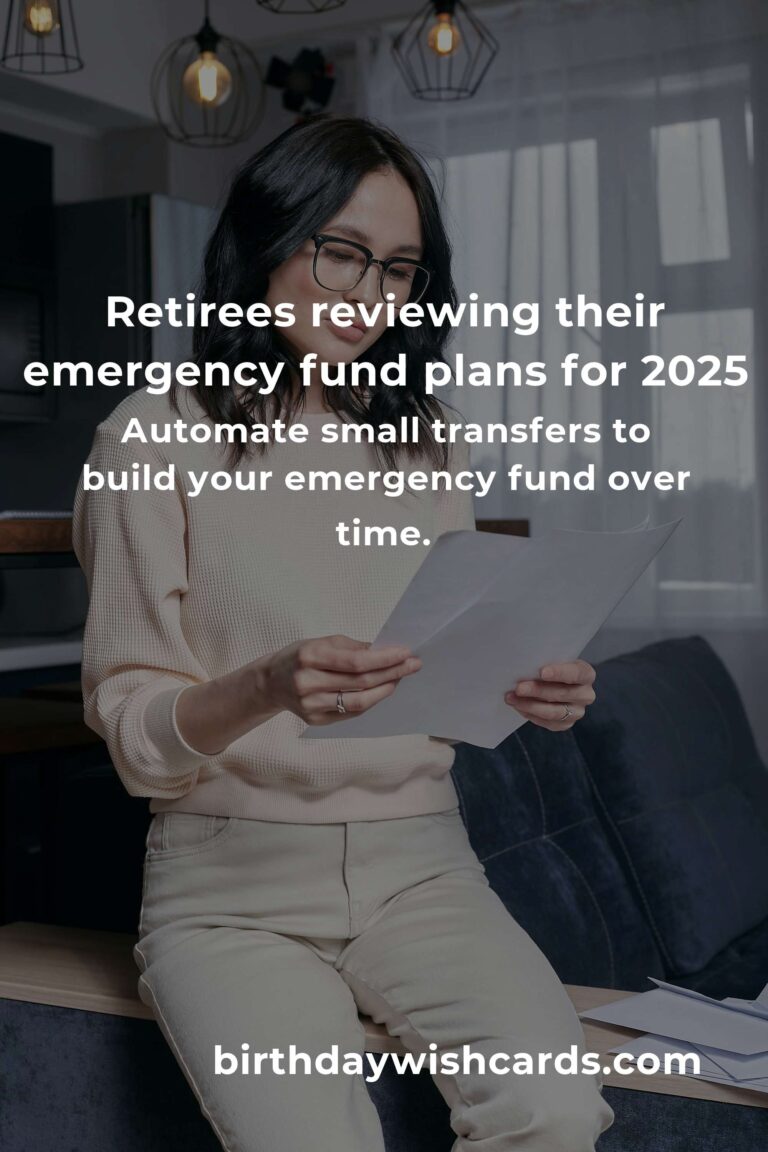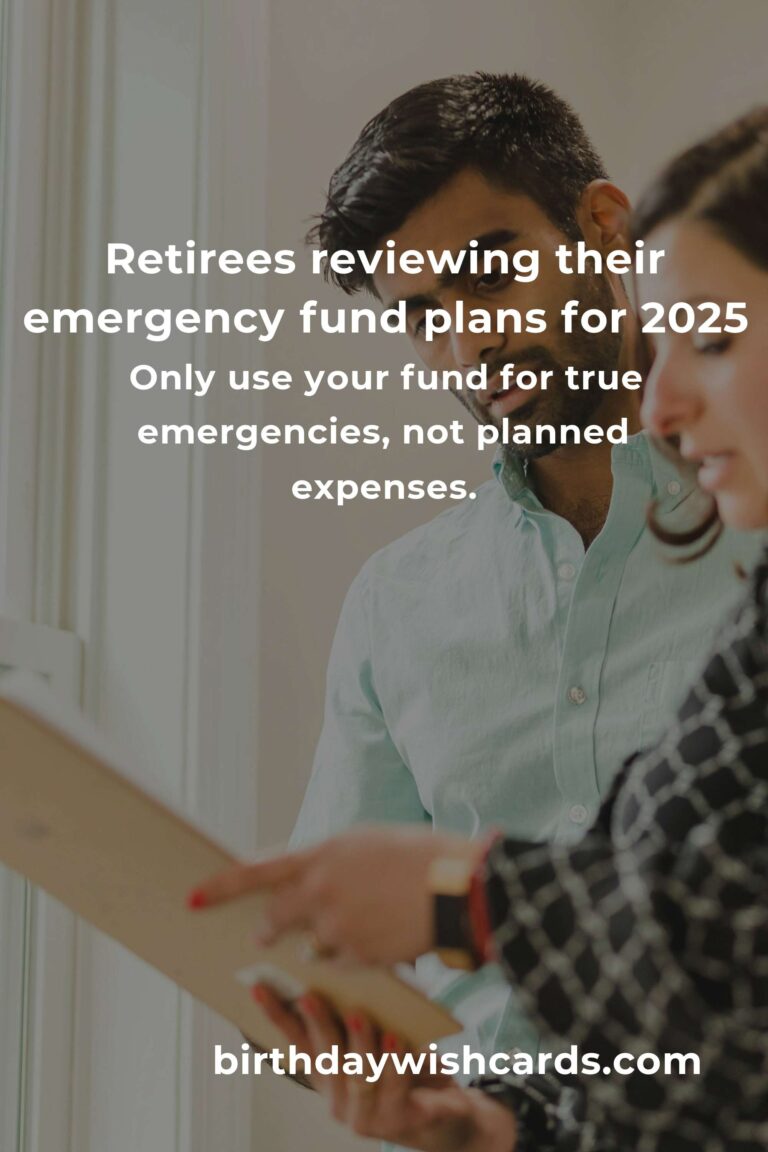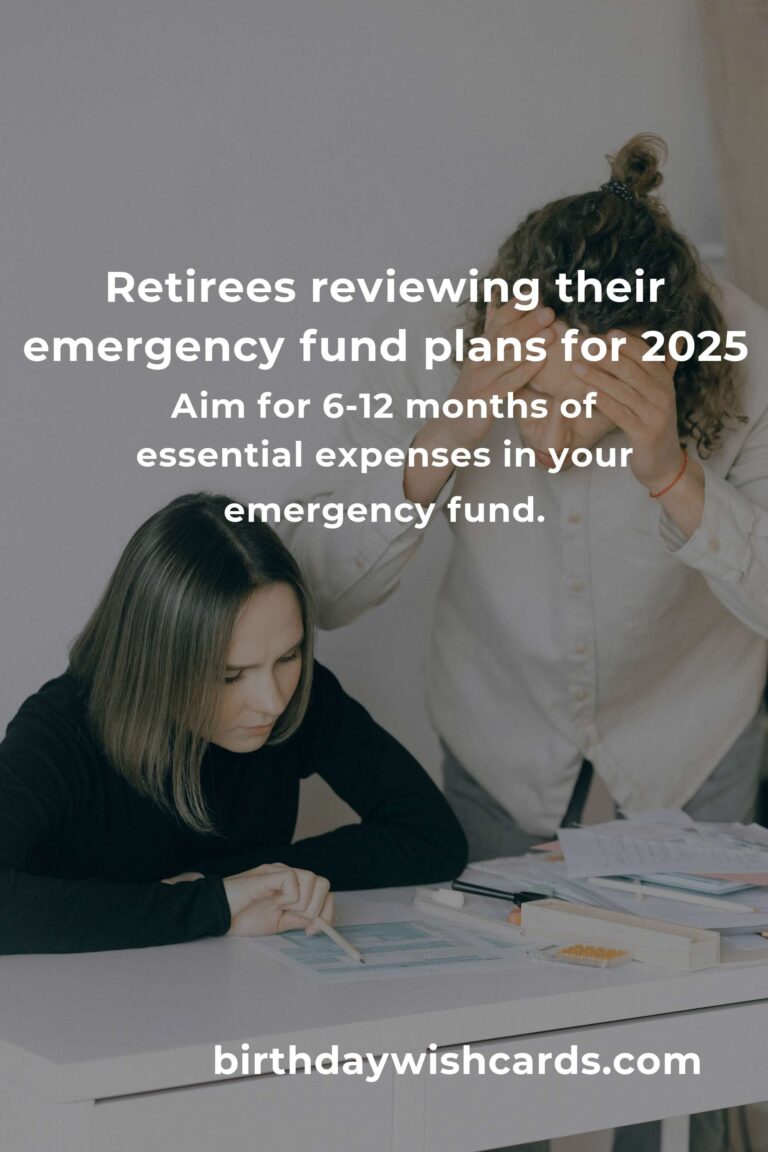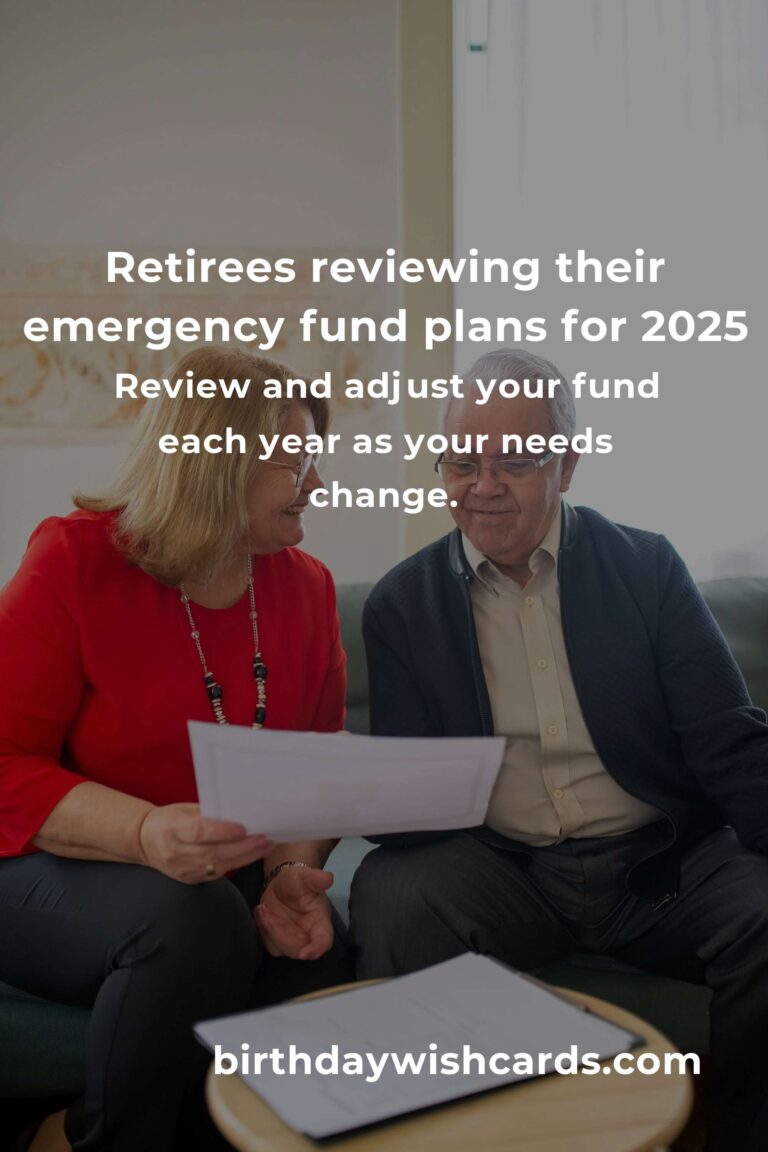
Retirement should be a time of joy and freedom, not anxiety. Yet, as a retiree, the thought of unexpected expenses—be it a medical bill, home repair, or family emergency—can keep you up at night. In 2025, with economic uncertainty and rising costs of living, having an emergency fund isn’t just wise; it’s essential for your financial security and emotional well-being. Let’s explore how you can build, manage, and optimize your emergency fund so you can breathe easy and truly enjoy your golden years.
Why Every Retiree Needs an Emergency Fund in 2025
Even if you’ve planned meticulously for retirement, life has a way of throwing curveballs. Here’s why a dedicated emergency fund is crucial:
- Unpredictable Medical Expenses: Even with Medicare or private insurance, out-of-pocket costs can arise.
- Home and Auto Repairs: Appliances break and cars need fixing—usually at the worst times.
- Family Emergencies: You may need to help children or grandchildren in times of crisis.
- Market Fluctuations: Selling investments in a downturn can lock in losses; a cash cushion lets you avoid this.
- Peace of Mind: Knowing you’re prepared reduces stress and lets you truly enjoy retirement.
How Much Should Retirees Save in an Emergency Fund?
The classic rule is to save 3-6 months’ worth of living expenses. However, retirees often need a more personalized approach. Consider the following:
- Monthly Expenses: Calculate your true monthly needs, factoring in healthcare, housing, food, and insurance.
- Other Income Sources: If you have steady pension or Social Security income, you may need a smaller fund. If your income is from investments, a larger fund is safer.
- Health Status and Insurance: If you have health concerns or high deductibles, buffer your fund accordingly.
As a rule of thumb, aim for 6-12 months of essential expenses in 2025, especially with inflation and medical costs on the rise.
Where Should You Keep Your Emergency Fund?
Your emergency fund should be safe, liquid, and accessible. Here are the best options:
- High-Yield Savings Accounts: These offer safety, easy access, and better interest rates than traditional savings accounts.
- Money Market Accounts: A good alternative with check-writing privileges.
- Short-Term CDs: If you don’t anticipate needing the cash for several months, these can offer higher rates. Stagger them (laddering) for more access.
Avoid using stocks, mutual funds, or retirement accounts (like IRAs) for emergency funds—they’re subject to market risk and withdrawal penalties.
How to Build Your Emergency Fund—Even in Retirement
Building an emergency fund may seem daunting, especially if you’re on a fixed income. But with these tips, you can grow your safety net without sacrificing your lifestyle:
- Automate Savings: Set up a small, recurring transfer from your checking to savings account.
- Redirect Windfalls: Tax refunds, gifts, or the sale of unused items can go straight to your emergency fund.
- Cut Non-Essential Spending: Review subscriptions or services you no longer need and redirect those funds.
- Downsize or Refinance: If feasible, reduce housing costs and allocate the difference to your emergency fund.
- Part-Time Work or Hobbies: Consider monetizing a hobby or taking on a flexible, low-stress job if you enjoy it.
Tips for Managing Your Emergency Fund in 2025
Your emergency fund isn’t a “set it and forget it” account. Here’s how to keep it working for you:
- Review Annually: Life changes—so should your fund. Recalculate your needs each year or after major life events.
- Keep It Separate: Don’t mingle your emergency fund with everyday spending accounts.
- Replenish Promptly: If you use your fund, make a plan to rebuild it as soon as possible.
- Shop for Better Rates: In 2025, online banks may offer higher yields—don’t settle for less.
Common Mistakes Retirees Make With Emergency Funds
Avoid these pitfalls to keep your emergency fund effective:
- Underestimating Expenses: Be thorough when calculating your monthly costs, including healthcare and inflation.
- Investing the Fund: Keep emergency money out of volatile assets.
- Using the Fund for Non-Emergencies: Reserve this cash strictly for true emergencies, not planned expenses or splurges.
- Ignoring Inflation: Adjust the size of your fund as costs rise.
How to Use Your Emergency Fund Wisely
When you face an unexpected expense, use your emergency fund strategically:
- Prioritize Needs: Only dip into the fund for urgent, unavoidable costs.
- Document the Expense: Keep records of why you used the fund and how much was withdrawn.
- Plan to Replenish: Set up a plan to rebuild your fund, even if it takes time.
This approach ensures your safety net is always there when you truly need it.
Emergency Fund Alternatives and Supplements
While a cash fund is ideal, you can supplement it with:
- Home Equity Line of Credit (HELOC): A backup for larger emergencies, but use it cautiously.
- Credit Cards: Only for true emergencies and if you can pay them off quickly.
- Access to Family Help: Open communication with loved ones can provide additional support.
Remember: these are supplements, not replacements for a cash emergency fund.
Staying Emotionally Strong: The True Value of an Emergency Fund
An emergency fund is more than just numbers in a bank account. It’s about freedom. Freedom to handle life’s surprises with confidence. Freedom to help family without risking your own security. And, above all, the freedom to sleep soundly, knowing you’re protected—no matter what 2025 brings.
If you haven’t started your emergency fund, today is the best day to begin. If you already have one, take a moment to review and strengthen it. Your future self—and your peace of mind—will thank you.
Final Thoughts: Take Action Today for a More Secure Tomorrow
Retirement is a journey, not a destination. With a well-stocked emergency fund, you can navigate the bumps in the road with grace and security. Start building or reviewing your emergency fund today, and step into 2025 with confidence, resilience, and peace of mind.
- Assess your expenses and set a realistic emergency fund goal.
- Choose a safe, accessible place for your funds.
- Automate your savings, even if it’s a small amount.
- Review your fund annually and adjust as needed.
- Keep emergency money separate from everyday accounts.
- Resist the temptation to invest your emergency fund in the market.
- Replenish your fund quickly after use.
- Consider backup options like HELOCs or family support.
- Recognize the peace of mind your fund brings.
- Start today—your security is worth it.
An emergency fund gives retirees peace of mind during uncertain times.
Aim for 6-12 months of essential expenses in your emergency fund.
Choose safe, accessible accounts like high-yield savings for your fund.
Automate small transfers to build your emergency fund over time.
Review and adjust your fund each year as your needs change.
Keep your emergency fund separate from everyday spending accounts.
Only use your fund for true emergencies, not planned expenses.
Replenish your emergency fund as soon as possible after using it.
Supplement your fund with backup options like a HELOC if needed.
Start building your emergency fund today for a more secure tomorrow.
#RetirementPlanning #EmergencyFund #FinancialSecurity #RetireeTips #PeaceOfMind #2025Retirement #SeniorFinance #RetireWithConfidence #MoneyMatters #RetirementHappiness













